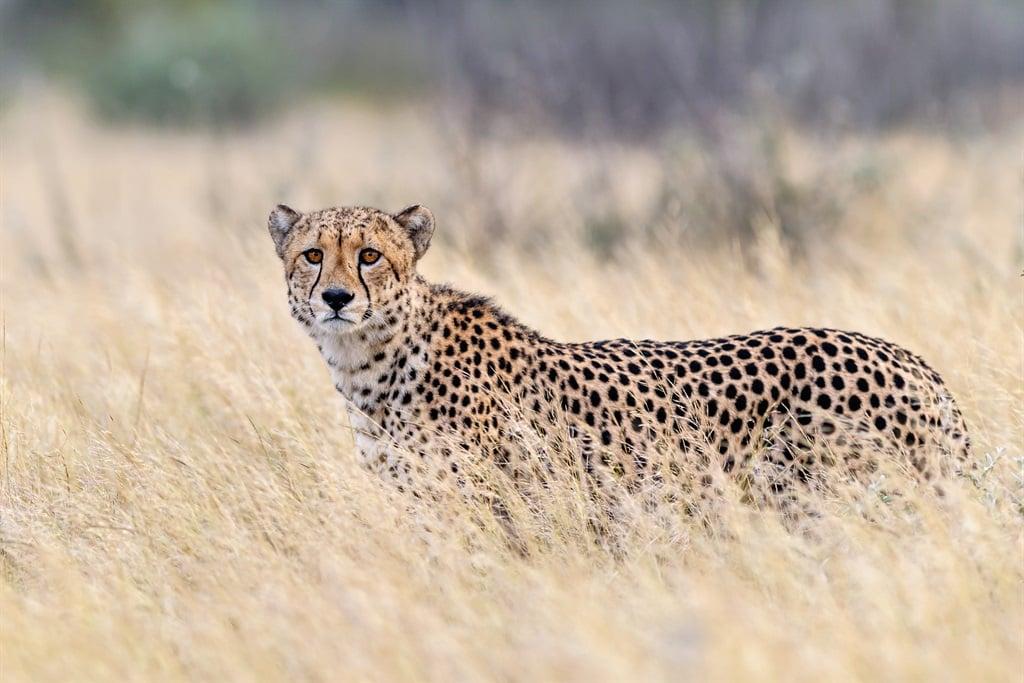Africa-Press – South-Africa. Most South African ambassadors aren’t tranquilised, placed in a crate, and expected to endure a 24-hour transit via plane and helicopter when taking up their posts.
But this is just the start of what it will take for 12 South African cheetahs to carry out their work in India.
The cheetahs are embarking on important conservation work: repopulating India’s wild spaces with their species 70 years after they were declared extinct in that country.
Travelling with these South African ambassadors is Professor Adrian Tordiffe, an associate professor of veterinary pharmacology and veterinary wildlife specialist at the University of Pretoria.
He will oversee the cheetahs’ travels and relocation to Kuno National Park in India.
Cheetahs have been extinct in India since 1952, and the reintroduction of the big cats to Kuno would present an opportunity to re-establish a wild population in the country, he said.
The cheetahs will travel to India later this month after a memorandum of understanding between the two governments was signed earlier this year.
The University of Pretoria has been involved in the project since 2020.
Southern Africa had been the home of a cheetah metapopulation programme for decades, said Tordiffe, relocating cheetahs to ensure a varied gene pool across the reserves in which they lived.
It had been an extremely successful endeavour, with the cheetah population increasing from 200 animals to 500 in the last decade, he added.
With a population growth rate of around 9% every year, there were close to 30 cheetahs that needed new homes each year, Tordiffe said.
The 12 cheetahs travelling to India come from different private game reserves, including three donated by &Beyond Phinda Private Game Reserve.
The reserve manager of Phinda, Simon Naylor, said the reserve was approached as a donor of the animals, as it was renowned for a healthy population of cheetahs.
Phinda was a founding and active member of the South African cheetah metapopulation management programme, said Naylor.
The cheetahs will be quarantined before their flight, then given a tranquiliser and placed in crates for transport. They will fly to the Gwalior Airforce Base in India before being transported by helicopter to Kuno.
Tordiffe said Kuno had previously been a fairly wild area with a number of rural villages.
These villagers had been incentivised to relocate to areas where residents had better access to education and healthcare, and the area had been turned over to a national park. The initial idea had been to introduce lions to the park, but this had failed to materialise.
After various holdups, in 2020, the green light was given for cheetahs to be introduced to the park.
The South African cheetah were going to have to adapt to the new space, said Tordiffe.
Kuno is home to a population of leopards, and the terrain varies from grassland, thickets, river land and forest. And of course, they would have to get used to the monsoon season, he said.
“They’re extremely adaptable animals. As long as they are provided with food and safety, they will adapt quite quickly.”
According to Tordiffe, the cheetah population at Phinda had provided an excellent case study for the relocation of cheetahs to India.
He said the cheetahs were initially sourced from Namibia and adapted to a different climate.
This saw their hunting methods change from predominantly chasing prey to ambush tactics and proved just how adaptable cheetahs could be to new environments.
Naylor said the reserve’s founding population of 12 cheetahs, which came from Namibia, have thrived.
“In addition to being the most intensively monitored and researched cheetah population in South Africa, they are also in high demand to restock or develop new cheetah populations.
“The founding cheetahs from Namibia adapted and managed to adjust to the new landscape and prey base at Phinda. Critics and many experts believed they would not,” he added.
“We have learnt that cheetahs are far more adaptable than many thought in the past. Research and studies showed at Phinda that the thicker bush actually benefitted the survival of cubs and increased hunting success.”
Naylor said conservation translocations had proven a critical tool in securing the survival of endangered species.
He added the relocation of cheetahs between isolated populations within fenced reserves helped to support the genetic integrity of the populations – something that was fundamental to their survival.
“Phinda has been contributing to the metapopulation programme of southern Africa for over 25 years. Much like when we received and successfully reintroduced and repopulated Phinda Private Game Reserve with cheetahs over 30 years ago, we believe the Indian cheetah project will significantly assist in the recovery of the species.”
Cheetahs from Phinda have been successfully translocated and reintroduced into reserves across South Africa, Malawi, Zambia, and Mozambique.
According to Tordiffe, the relocation not only ensured the growth of the cheetah population but it also provided ecological benefits to the game and land inside Kuno.
While leopards are ambush predators that often hunt at night, cheetahs go for smaller prey and hunt during the day.
Introducing cheetahs will see them chase down smaller, weaker prey animals, which will, in turn, contribute to a healthier prey population.
For More News And Analysis About South-Africa Follow Africa-Press






